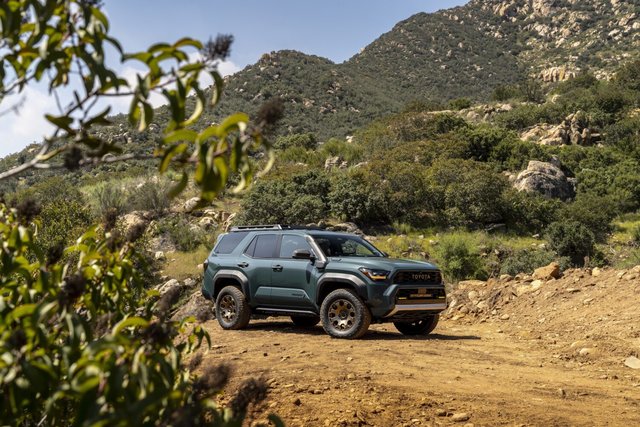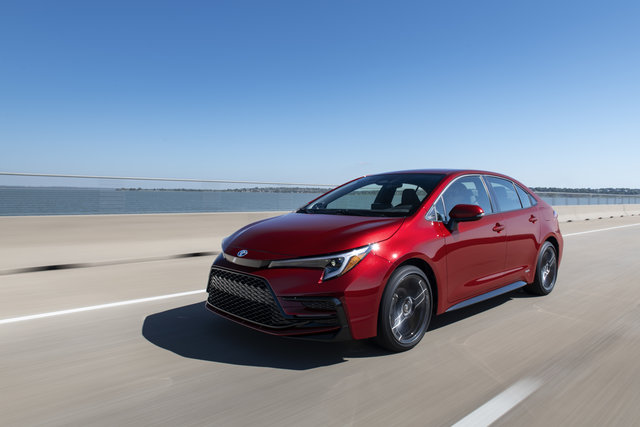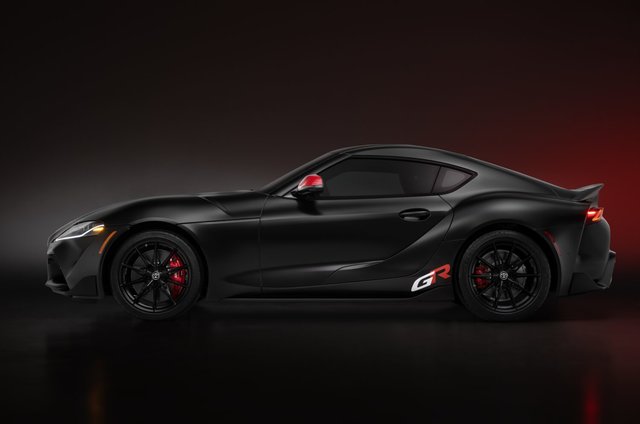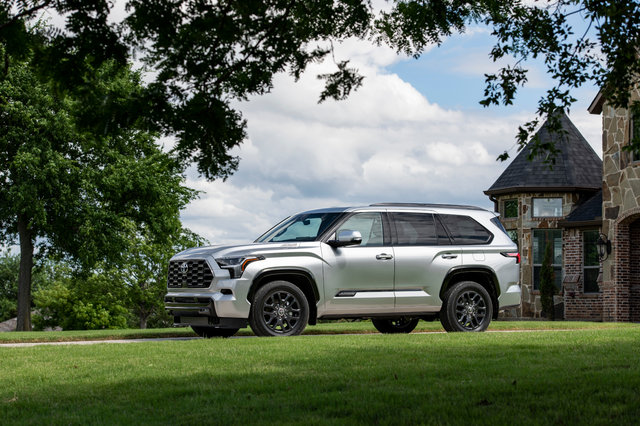The Toyota Corolla has earned its reputation as the world's best-selling vehicle through decades...

Toyota's Trailhunter series represents the brand's factory-built solution for serious overlanding enthusiasts. Available in both the 2025 Tacoma pickup truck and 4Runner SUV, these purpose-built explorers share a common philosophy but offer distinct advantages based on their underlying platforms. For adventurers ready to venture far off the beaten path, understanding these differences helps match the right Trailhunter to your specific exploration needs.
Both Trailhunters come equipped with Toyota's powerful i-FORCE MAX hybrid powertrain, specialized Old Man Emu suspension by ARB, and integrated overlanding features straight from the factory. Yet each vehicle's unique architecture creates different capabilities and experiences on the trail.
Powertrain Performance
Both Trailhunter models feature Toyota's impressive i-FORCE MAX hybrid powertrain built around a 2.4-litre turbocharged four-cylinder engine. This electrified system delivers substantial power with 326 horsepower in both vehicles. Where you'll notice a difference is in torque delivery—the heart of off-road capability.
The 4Runner Trailhunter produces 465 lb-ft of torque, ideal for tackling technical obstacles and steep climbs. The Tacoma Trailhunter matches this torque figure but applies it differently through its pickup architecture, providing strong pulling power for towing needs (up to 5,950 pounds) along with impressive crawling ability.
Suspension and Off-Road Equipment
While both Trailhunters feature position-sensitive 2.5-inch Old Man Emu shock absorbers co-developed with ARB, their implementation differs based on each platform's foundation.
The Tacoma Trailhunter utilizes a multi-link rear suspension that provides excellent articulation and control. With its 33-inch Goodyear Territory R/T tires, it sits two inches higher in front and one-and-a-half inches in the rear compared to standard models.
The 4Runner Trailhunter also runs on 33-inch all-terrain tires but utilizes a different suspension geometry based on its SUV platform. Both vehicles include a front stabilizer bar disconnect system that increases articulation for technical trail sections, but the mechanical implementation varies between the two platforms.
Cargo Configuration Advantages
The most obvious distinction between these Trailhunters lies in their cargo configurations, which create different advantages for overlanding scenarios.
The Tacoma Trailhunter offers an exposed 6-foot bed with a bed utility bar featuring removable MOLLE panels—ideal for securing expedition gear that you don't mind exposing to the elements or that's too large for enclosed transport. The pickup configuration provides more flexibility for carrying outsized equipment, dirt bikes, recovery boards, or bulky gear.
The 4Runner Trailhunter provides enclosed, climate-controlled cargo space with access through the rear liftgate. This configuration delivers superior security and weather protection for sensitive equipment. The 4Runner also features Toyota's classic power roll-down rear window—a unique advantage for accessing gear without opening the liftgate in tight spaces.
Interior Space and Comfort
For extended overlanding journeys, interior comfort makes a significant difference in your adventure experience.
The 4Runner Trailhunter offers more passenger volume with available seating for five in a cabin designed primarily for occupant comfort. The SUV configuration provides a quieter ride with acoustic windshield and front side glass, creating a more comfortable environment during long highway stretches between trails.
The Tacoma Trailhunter, while also seating five in its Double Cab configuration, allocates more of its total length to the cargo bed. This results in slightly less interior volume but maximizes utility for gear transport. The Tacoma also features IsoDynamic Performance front seats that help reduce driver fatigue during demanding off-road sections.
Trail Navigation and Clearance
Ground clearance and approach/departure angles create important differences in how each Trailhunter handles obstacles.
The 4Runner Trailhunter offers up to 11.1 inches of ground clearance with approach angles reaching 33.8 degrees—ideal for navigating large obstacles and technical terrain. Its shorter overall length provides better maneuverability in tight trail sections.
The Tacoma Trailhunter's longer wheelbase and pickup architecture create different clearance characteristics, trading some maneuverability for enhanced stability on sidehills and when crossing uneven terrain. Its articulation capabilities shine on off-camber sections where the multi-link rear suspension can work through its travel range.
Overlanding-Specific Features
Both Trailhunters include purpose-built overlanding equipment, but with platform-specific implementations.
The Tacoma Trailhunter features bed scene lighting specifically positioned to eliminate dark spots around your campsite setup. Its bed side scene lights illuminate the area surrounding the cargo space—perfect for nighttime camp setup.
The 4Runner Trailhunter includes similar lighting solutions but configured differently for its enclosed cargo area. Both models feature a 2400-watt AC inverter, rock rails, recovery points, and an onboard air compressor, but their placement and integration vary based on each vehicle's architecture.
Choosing Your Trailhunter
Selecting between these two capable overlanders comes down to your specific adventure style:
Choose the Tacoma Trailhunter if:
- You prioritize cargo versatility for large or dirty equipment
- Your adventures include hauling additional vehicles or equipment
- You prefer the flexibility of a separate cab and bed configuration
- You want maximum towing capability with your overlander
Choose the 4Runner Trailhunter if:
- You value enclosed, secure storage for valuable equipment
- Your expeditions require maximum interior comfort for passengers
- You navigate tight, technical trails where maneuverability matters
- You want a quieter, more refined base camp experience
Your Next Adventure Begins Here
The 2025 Toyota Trailhunters epitomize Toyota's most capable factory-built overlanding vehicles, each offering unique advantages based on its platform architecture. Visit Erin Park Toyota today to explore both Trailhunter models in person and discuss which configuration best supports your specific adventure plans.
Other Articles That May Interest You
With the 2026 Toyota GR Supra MkV Final Edition arriving at Canadian dealerships this spring,...
The Toyota Sequoia has long stood as a formidable presence in the full-size SUV market, but the...





